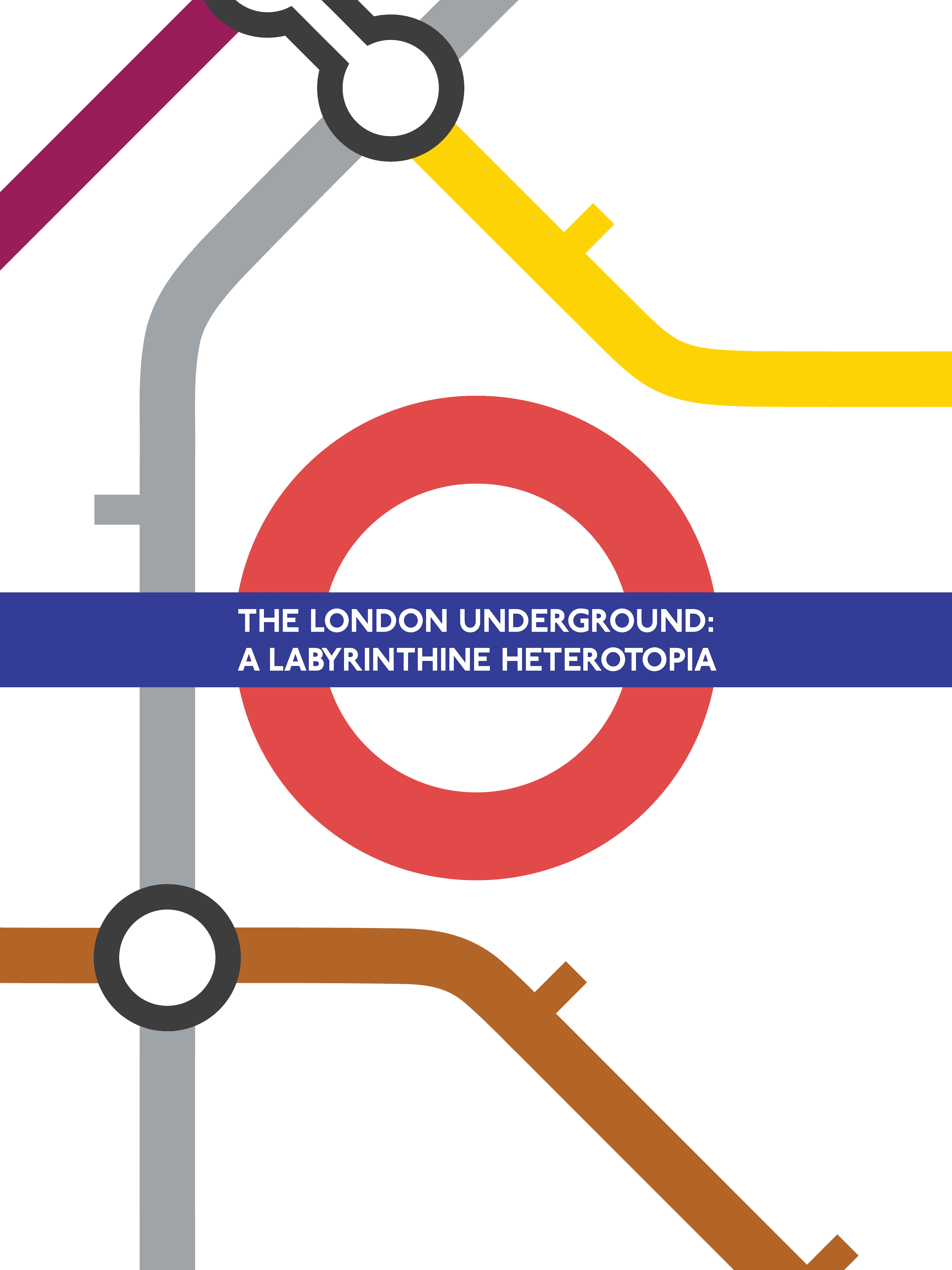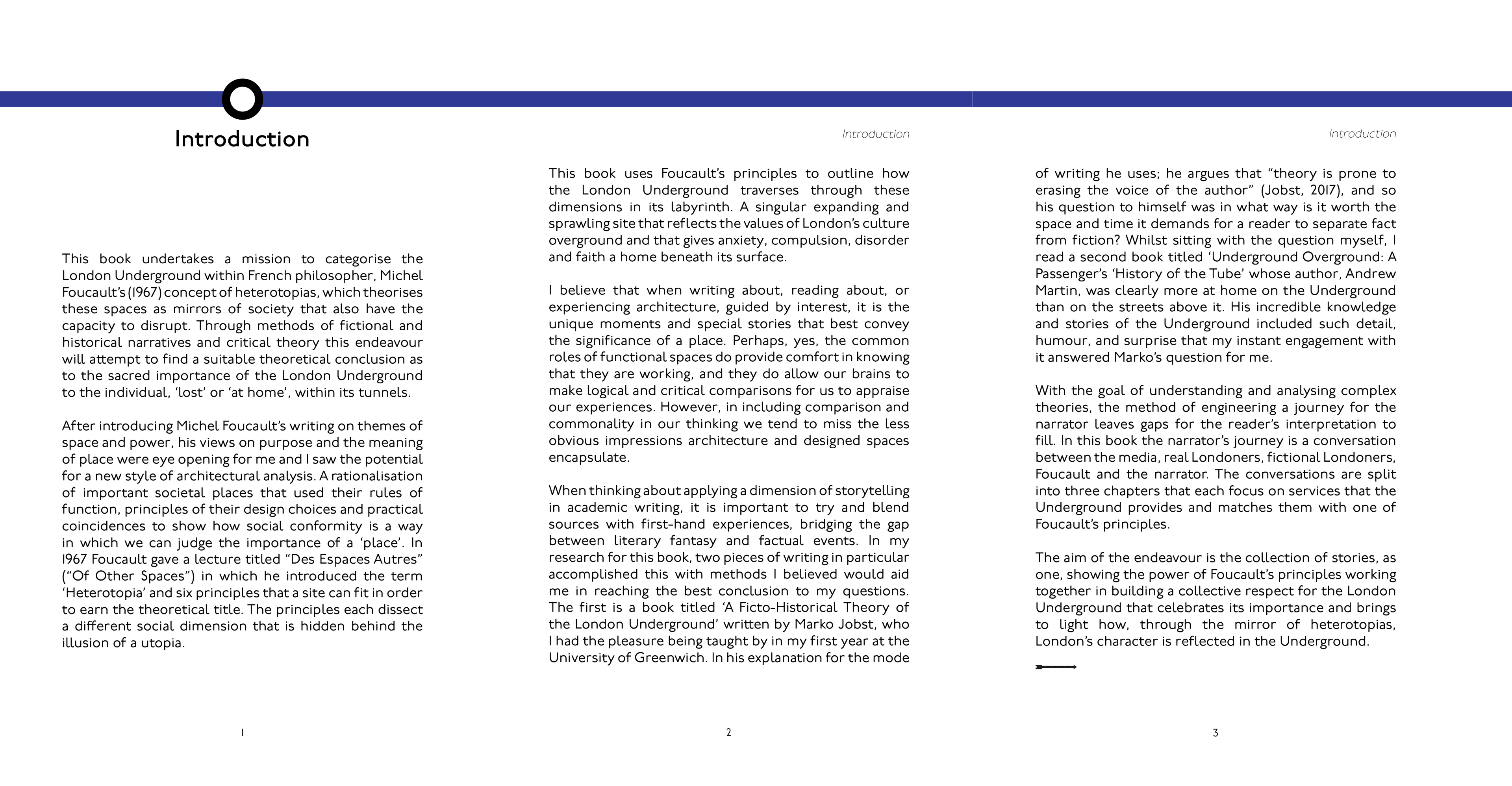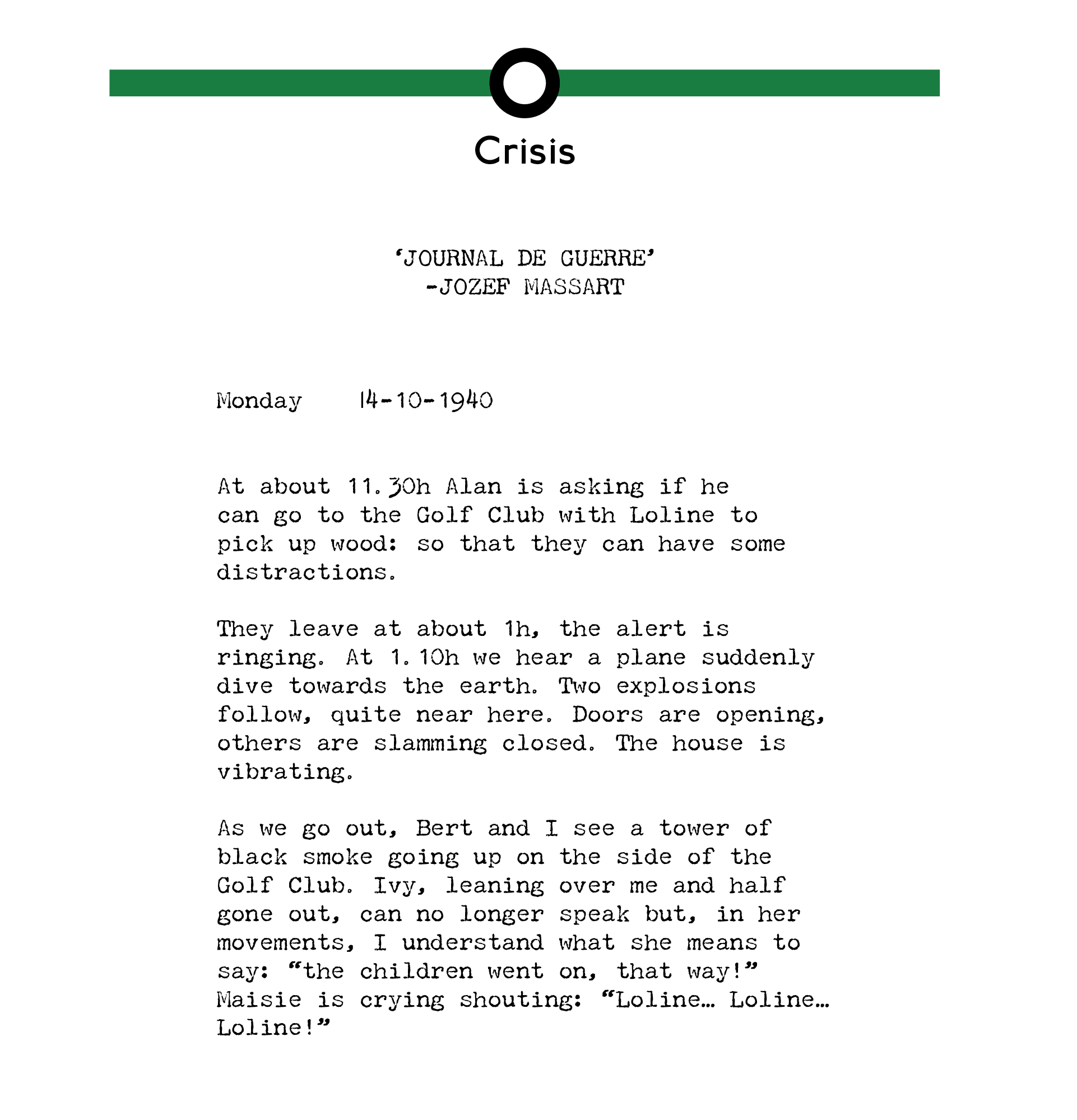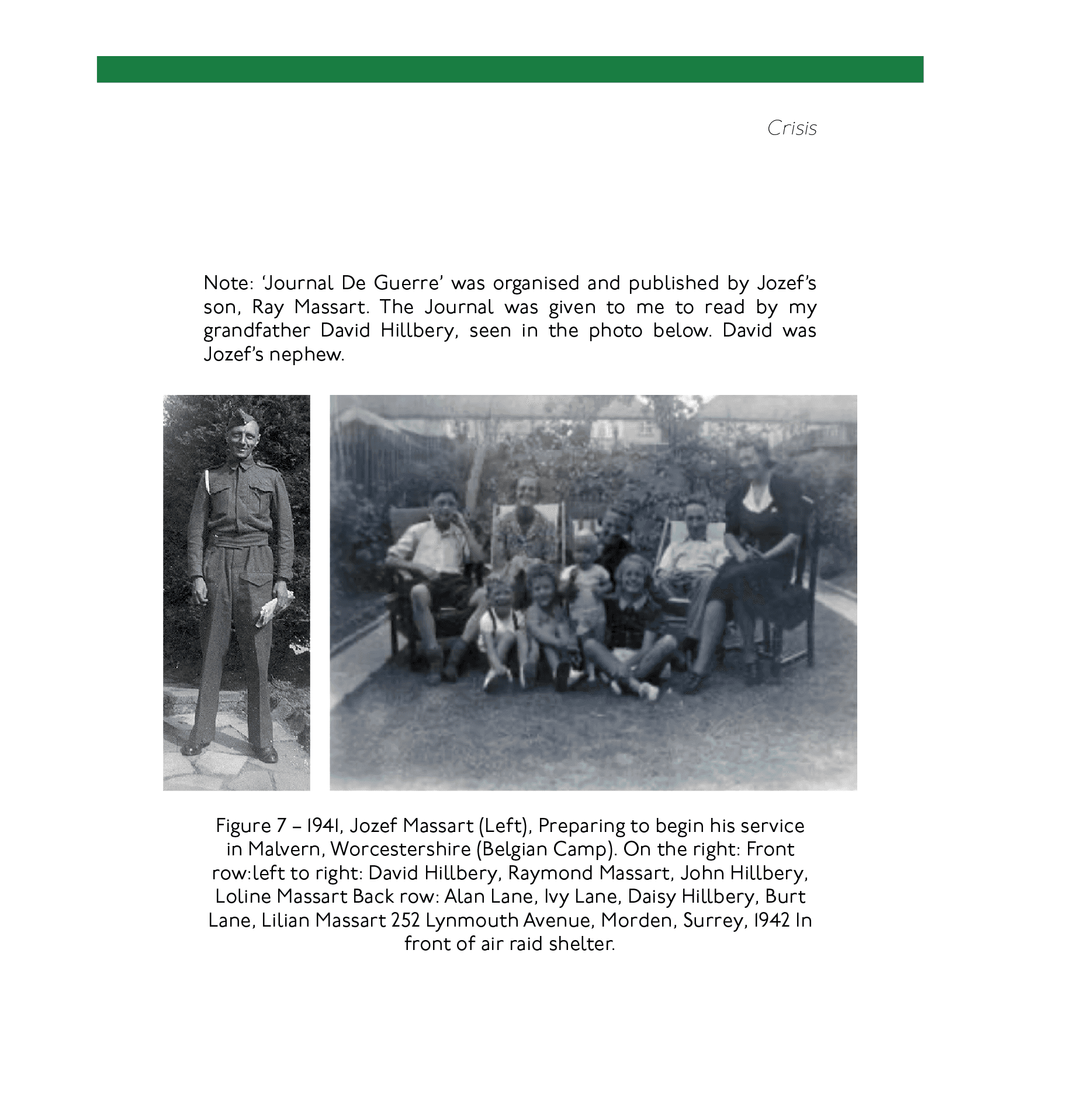The London Underground: A Labyrinthine Heterotopia
Project Details
I leaned into the subject of the London Underground, as I was looking to investigate a local space, or piece of architecture that, to me, was seemingly inescapable. Despite searching for a narrative that would summarise my personal experience of travelling beneath the streets of London, I soon felt too restricted by the historical period in which my experiences took place.
And so, in imagining stories (fact or fiction), time-travelling between them and ‘interrupting’ them, I put together this anthology of stories that allows a reader to escape what they think they know about the London Underground.
My dissertation has allowed me to challenge myself in combining my love for storytelling with applied theoretical knowledge. It has developed my skills in effective communication, in-depth research and the interdisciplinary thinking that is essential when pursuing a career in architecture.
Abstract
This book undertakes a mission to categorise the London Underground within French philosopher, Michel Foucault’s, concept of heterotopias, which theorises these spaces as mirrors of society that also have the capacity to disrupt. Through methods of fictional and historical narratives and critical theory this endeavour will attempt to find a suitable theoretical conclusion as to the sacred importance of the London Underground to the individual, ‘lost’ or ‘at home’, within its tunnel
After introducing Michel Foucault’s writing on themes of space and power, his views on purpose and the meaning of place were eye opening for me and I saw the potential for a new style of architectural analysis. The analysis uses Foucault’s principles to outline how the labyrinth of the London Underground traverses through social dimensions. A singular expanding and sprawling site that reflects the values of London’s culture overground and that gives anxiety, compulsion, disorder and faith a home beneath its surface.
The collection of stories, as one, shows the power of Foucault’s principles working together in building a collective respect for the London Underground that celebrates its importance and brings to light how, through the mirror of heterotopias, London’s character is reflected in the Underground.





